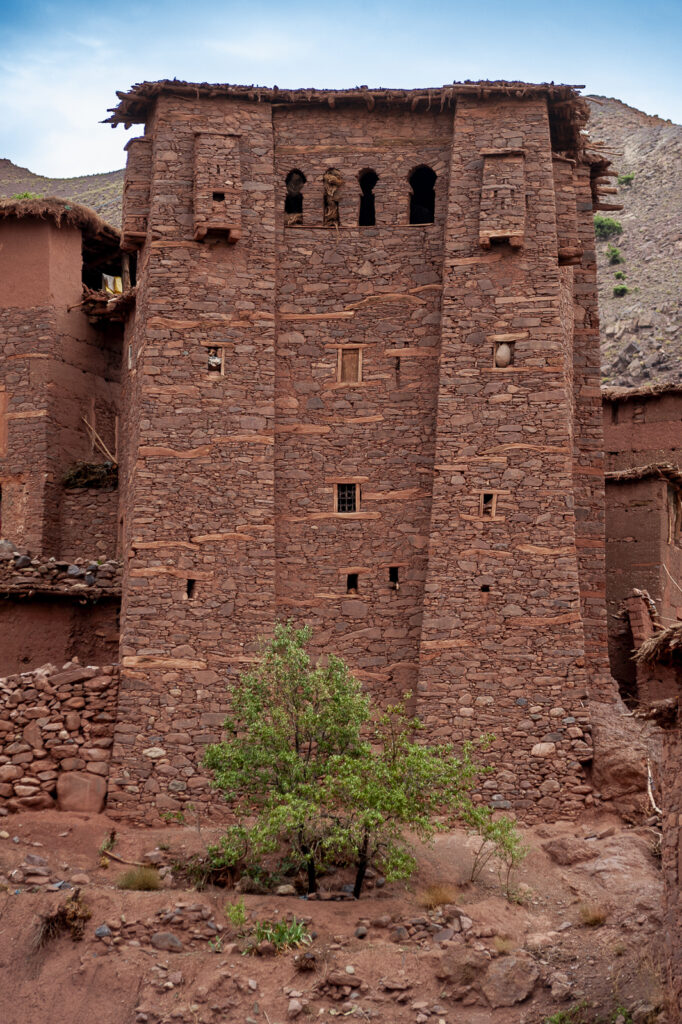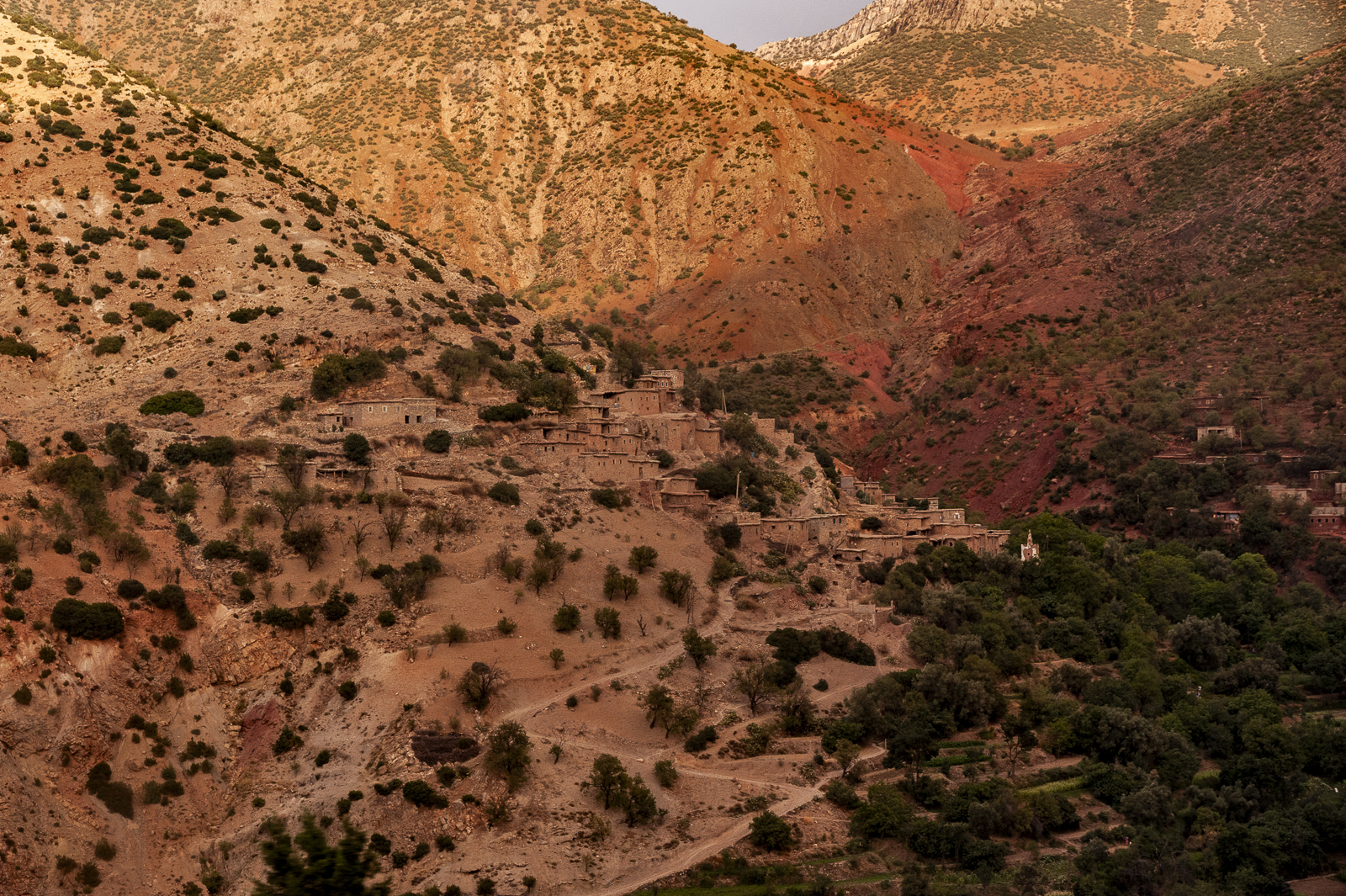
The agadir, as it is named in the Tachelhit of southern Morocco, or igherm/ighermt in the Amazigh of central Morocco, always comprises several elements: storage spaces for goods (from 16 to 290 spaces), ramparts, watchtowers, tanodfi (a water tank), housing for the guard, housing for the inflass (important people chosen by the tribe), craftsmen’s workshops, which were often Jewish, a prayer area, collective beehives, commercial spaces, stables, etc.
The agadir traditionally served as a refuge and a place for commercial transactions, but it also played a political and legal role (seat of the inflass – notables), and had social and religious functions. According to ancient writings (Diodorus of Sicily, Sallust and Pliny the Elder), the agadir has existed in North Africa at least since the 1st century BC. In Morocco in medieval times, the agadir evolved and its management (Amazigh customary law), called llouh started to be regulated. The oldest version (of Ajarif) dates back to 1344 (Merinid dynasty, govern.1244-1465) and was approved by the Sa’adi Sultan in the 16th century, which meant the spread of these regulations and their generalisation to other granaries.
Today, the agadir, which are still in operation, especially in the Sirwa and the Sus, are used to store goods and grain, which explains their name, meaning collective granary, like the hórreos in Galicia, the espigueiros in Minho (Portugal), and the Tunisian and Libyan agassrou . The agadir has recently applied for recognition as a UNESCO World Heritage item.
Hassan Ramou
Mohammed V University, Rabat, Morocco
















